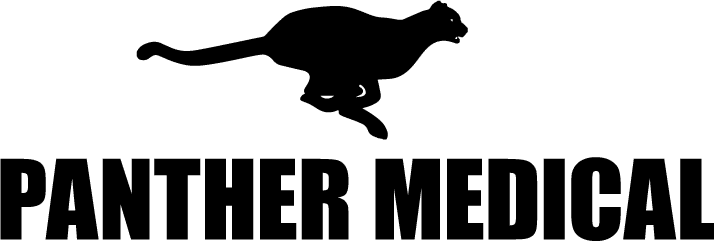 Combining Rogaine with Other Hair Loss Treatments
Combining Rogaine with Other Hair Loss Treatments
Understanding Rogaine: How It Works for Hair Loss
Rogaine, also known as Minoxidil, is a topical solution widely recognized for its efficacy in stimulating hair growth. Originally developed to treat high blood pressure, its hair-raising side effects led to its adaptation for treating hair loss. Applied directly to the scalp, Rogaine works by increasing blood flow to hair follicles, which revitalizes shrunken follicles and prolongs their growth phase. This results in thicker, fuller hair over time.
Understanding how Rogaine operates can help users maximize its benefits. Typically, hair loss occurs due to a reduction in the size of hair follicles. Rogaine counters this by widening the blood vessels, which assists in delivering more oxygen and nutrients to the follicle. The consistent use of this treatment is crucial, as it can take several months to see visible results.
| Aspect | Details |
|---|---|
| Primary Function | Stimulates hair growth by increasing blood flow to follicles |
| Origin | Originally a treatment for high blood pressure |
| Application | Topical solution applied directly to the scalp |
| Timeframe | Several months for visible results |
Prescription Medications: Enhancing Rogaine's Effectiveness

Combining Rogaine with prescription medications such as Finasteride can significantly amplify results for those battling hair loss. Finasteride, often marketed as Propecia, works by inhibiting the enzyme responsible for converting testosterone to dihydrotestosterone (DHT), which is a crucial factor in hair thinning. This dual approach not only helps in arresting hair loss but also encourages regrowth.
Moreover, Rogaine interacts synergistically with Finasteride, offering a multi-faceted attack on baldness. While Rogaine enlarges hair follicles and supports new growth, Finasteride lowers DHT levels systemically, protecting existing hair from further damage. Such a combination provides a robust defense against hair loss, making it a popular choice among dermatologists and patients alike seeking effective treatment regimens.
Natural Remedies That Complement Rogaine Treatment
While Rogaine is widely recognized for its effectiveness in promoting hair growth, integrating natural remedies can elevate its benefits. Essential oils like rosemary and peppermint are known for their scalp-stimulating properties, promoting healthier follicles. Aloe vera, a natural soothing agent, helps reduce scalp inflammation and provides a nurturing environment for hair growth. Additionally, incorporating a scalp massage routine using these oils can improve blood circulation, further aiding the efficacy of Rogaine. Health supplements such as biotin and saw palmetto also offer invaluable support by addressing potential nutrient deficiencies that may contribute to hair loss. By thoughtfully combining these natural approaches with Rogaine, individuals can create a holistic hair care regimen that supports robust and sustained hair health.
Diet and Nutrition: Supporting Hair Growth Internally

In the realm of hair loss treatments, the nourishment provided by a balanced diet and essential nutrients can significantly amplify the effectiveness of Rogaine. Consuming a variety of vitamins and minerals, such as biotin, zinc, and iron, supports the health of your hair follicles, promoting robust hair growth. Proteins, which form the building blocks of hair strands, should also be incorporated into your diet to provide the necessary strength and resilience.
Omega-3 fatty acids found in fish oils, flaxseeds, and walnuts can counteract inflammation and enhance scalp health. Antioxidant-rich foods like berries and greens help combat oxidative stress, which can impair hair growth. When combined with Rogaine, these dietary strategies can offer a powerful, integrated approach to hair restoration, ensuring that your internal health vibrantly supports your external transformation.
Laser Therapy: a High-tech Ally for Rogaine Users
Combining Rogaine with laser therapy can significantly enhance hair regrowth efforts. Low-level laser therapy (LLLT) offers a high-tech solution, emitting photons into scalp tissues to stimulate blood flow and hair follicle activity. This non-invasive treatment can be administered via devices such as laser combs, helmets, or caps, making it a convenient addition to your hair care regimen.
```html
| Laser Therapy Devices | Usage Recommendations |
|---|---|
| Laser Combs | Use 3 times a week for 15 minutes |
| Laser Helmets | Wear 20 minutes daily |
| Laser Caps | 30 minutes every other day |
Studies demonstrate that laser therapy can reduce inflammation and improve cellular energy, which aids Rogaine users in achieving optimal results. Consistency is key; combining both treatments may shorten the timeline for observable improvements. Effective for both men and women, it offers a scalable solution for various stages of hair loss.
How to Incorporate Oils and Serums with Rogaine
Integrating various oils and serums with Rogaine can significantly enhance your hair care regimen. Begin by applying Rogaine, allowing the treatment to penetrate your scalp thoroughly. Typically, it is recommended to wait at least four hours to ensure maximum absorption of the active ingredient, minoxidil. Following this period, gently massage your preferred oil or serum into your scalp. Oils such as coconut or castor oil not only offer deep nourishment but also help seal in moisture, combating dryness often caused by Rogaine.
Choosing the right serum can further amplify the benefits. Serums infused with ingredients such as biotin, niacin, or peptides can stimulate hair follicles and support healthier growth. Be consistent with this routine, applying the products regularly as directed. Combining Rogaine with carefully selected oils and serums can offer a powerful synergy, promoting not just hair regrowth, but overall hair health.
